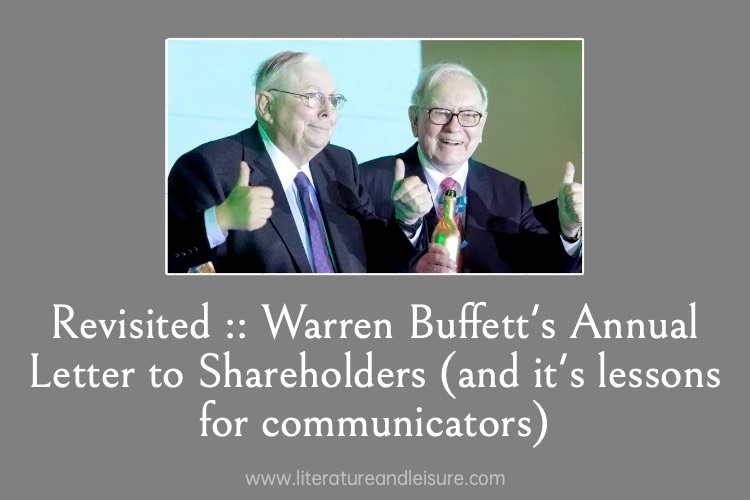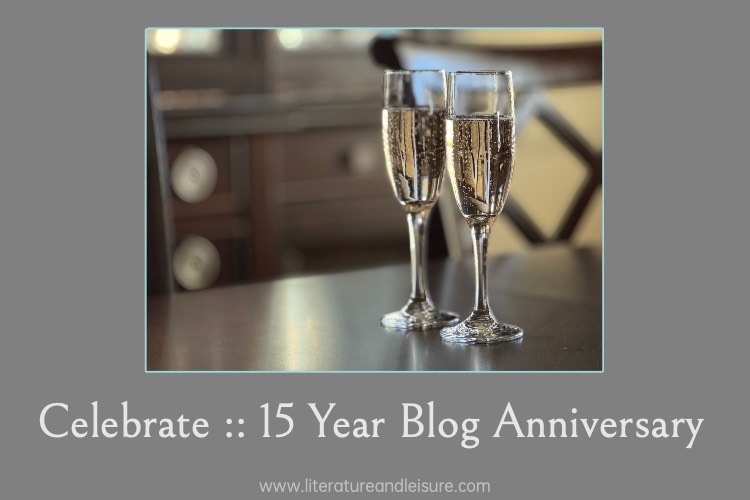
A few years ago I shared a post about what corporate comms pros (and their CEOs) could learn from Warren Buffett’s annual letter to Berkshire Hathaway (BH) shareholders. When I was reading this year’s letter, there were a few more nuggets along this same theme that I think are worth pointing out.
I’m not going to revisit the six things I pointed out that Buffett did well in his letter in 2021, but all of those are still relevant. Instead, I’d like to call out a few additional best practices that he uses.
Make sure to address the elephant in the room. The most significant update for Berkshire Hathaway from this past year was the passing of Charlie Munger, Buffett’s long-time business partner and friend whom he refers to as “The Architect of Berkshire Hathaway.” Buffett jumps right into his update by acknowledging this loss and giving credit for the success of BH where it’s due. It is a nice full-page eulogy.
Picture your audience – an audience of one. This really does make it seem like Buffett is tuning into an internal comms podcast. He says that in writing this letter, he finds it helpful to visualize a single investor that embodies his audience – his sister Bertie. Bertie isn’t Buffett’s target audience because of her bloodline, but more so because she is “smart, wise and likes to challenge my thinking.” He goes on, “Bertie, like most of you, understands many accounting terms, but she is not ready for a CPA exam… (and) doesn’t consider herself an economic expert.” The rest of the letter is based on “What would interest Bertie this year?” For IC pros, we are taught to write, not to “employees”, but a specific employee, in a specific department, and think about what would interest them.
There’s the facts, and then there’s the story. Buffett shares the facts, but he doesn’t neglect to tell the story. When reporting on finances, he points out that there are certain numbers he’s expected to share – “net earnings (loss)” – which he does. He goes on to say that there are other numbers – “ operating earnings” – that are likely more important so he shares them and tells us why Bertie would be more interested in these.
Be honest. This one can be so hard because most people, especially when communicating with a large group, want to put the very best “spin” on the message. Berkshire Hathaway’s story is very good. But Buffett tempers his rose-colored glasses just a bit by saying that because they have had such phenomenal success in the past, people should manage their expectations of what’s to come. Many CEOs would be tempted to say – look at how well we’ve done and so expect even better results in the future! Buffett does just the opposite. He says, we’ve done well, and we’ll continue to do well, but “we have no possibility of eye-popping performance.” We’re now too big for exponential growth.
He is honest in a way that also provides reassurance. Anyone who has been following economics for the last twelve months knows that the headlines have been extreme and inconsistent. Are we or aren’t we headed for a recession? Is inflation getting better or worse? If it’s going down, why are grocery costs still going up? In short, there’s been a fair amount of chaos in messaging in the world of finance. Buffett counters this by saying: “Berkshire is built to last.” He reassures his readers (or reader – Bertie!) that we’ve weathered these storms before, and we’ll weather this one.
Let a few specifics speak for the whole. In an annual message like this one, there’s a strong proclivity to exhaust every subject. Instead, Buffett mentions a few holdings – AMEX, Coke, Occidental Petroleum – and lets Bertie understand that these are exemplary of her portfolio. In short, less is more. (Maybe that’s a hard message to sell for a 16-page letter?)
Another thought that is less a comms message and more of a pitch to read his letter if you don’t already – if you’re a history buff and love observations about current affairs – I strongly encourage you to read Buffett’s letter. This one, in particular, has some interesting insights on railroads and their importance to our economy.
Finally, in a “the data speaks for itself” way, it is hard to not be impressed by the page after Buffett concludes his letter: Berkshire’s Performance vs. the S&P 500 from 1965 to present with calculated Compounded Annual Gain and Overall Gain, Berkshire outperforms the S&P 19.8% to 10.2%.
With those kinds of results, no matter the subject, he’s the kind of leader I want to read and learn from.





Comments
Powered by Facebook Comments